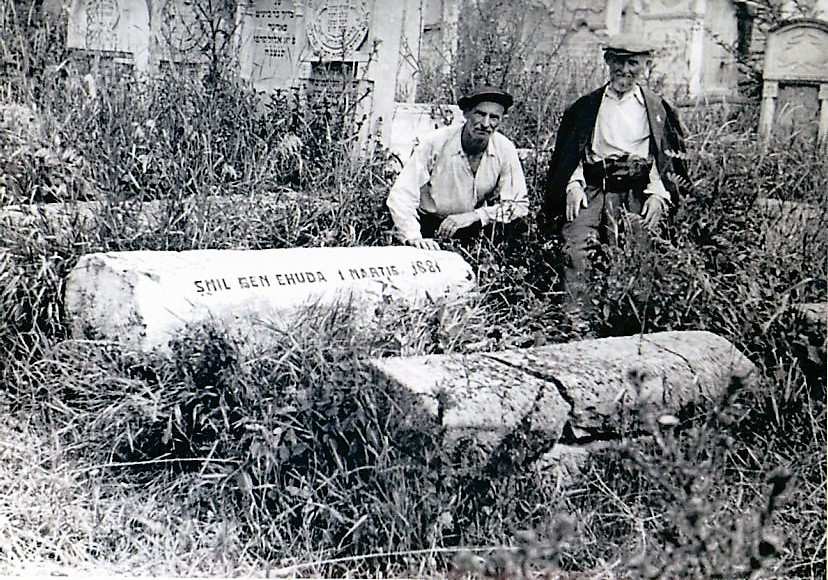
Along with the request to build a synagogue, the request to allocate space for a Jewish cemetery was one of the first items presented by the community to the authorities throughout the generations. Cemeteries testify to the life of the Jewish community, and are evidence of its continuity.
There are about one thousand cemeteries preserved to this day in various communities throughout Romania. These cemeteries are interesting mainly because of the information that can be drawn from the inscriptions, and from the interesting and sometimes difficult to decipher symbols that are engraved on gravestones. These symbols, especially in Moldova, contain unique motifs, including animals such as lions, bears, deer, and imaginary animals such as gryphons and unicorns. Some of these symbols are also found in Romanian art. For example, the lion appears in the architectural style of Prince Brâncoveanu.
The topography of the cemeteries and the dates inscribed on the tombstones may provide important information about the past of the communities. An interesting example was found in the Jewish community of Bacău, whose date of origin could only be estimated due to an inscription found on a monument dated from 1703.
Cemeteries, like synagogues, were essential to the existence of every Jewish community, and they attested to their presence there. For various reasons, such as destruction due to weather or neglect, the oldest stones have been lost in most of the old cemeteries. However, even though most of these ancient tombstones were destroyed, we can find some information about them in the writings of scholars who discovered them in old sources and wrote about them.
In the modern era, cemeteries continued to reflect the history of the community. For example, in the cemeteries in Bucharest and Iași there are plots where Jewish soldiers who fell in World War I are buried. On the other hand, during World War II, the Romanian government, headed by Ion Antonescu, decided to remove Jewish cemeteries from the city centers. The decision was made on October 8, 1940, and in June 1942 the Jews of Bucharest were forced to "donate" the ancient Jewish cemetery in Sevastopol to the city which was built in the 17th century. Moreover, Jews who were recruited for forced labor worked for two years to remove the remains of the dead from the ground, which had been transferred to other cemeteries. Following Antonescu's decision, in 1943, the mayor of Iași, Constantin Iprim, ordered the destruction of the ancient cemetery that was built in the 16th century in order to build new residential buildings for the local Christian residents. About 100 Jews from the local community were forced to remove the remains of 100,000 Jews from the graves. After many efforts, the Jewish community's leaders received permission to transfer some of the remains to a mass grave in the new cemetery in the town of Păcureri. In exchange for bribes, a small number of tombstones were also transferred, but most of the tombstones were used for paving streets. Although the area had been cleared, some of the Christian residents who feared dead spirits refused to build their homes in the area, and part of the old cemetery became a park. In 2016, the City Hall of Iași placed a memorial plaque in remembrance of the ancient Jewish cemetery.
During Communist rule and unlike other communist countries, the Romanian authorities kept most of the cemeteries. In 2002, a decade after the fall of the Communist regime, the government transferred ownership of the cemeteries to the Federation of Romanian Jewish Communities. After the cemeteries were transferred to it, the Federation allowed local residents to work on the available empty land in exchange for the maintenance of cemeteries.